Author: Ryan Hansen
According to what’s known about beer history, IPA has been around for at least two centuries, though modern examples would likely be unrecognizable to those who developed this now ubiquitous style. This is due in large part to the development of new ingredients, namely hops that contribute desirable fruitiness to beer, though it’s also a function of increased knowledge about how to accentuate such characteristics.
Over the last few years, brewers have begun to focus more on thiols, which are organic compounds that impart intense tropical aroma to beer. However, in addition to many thiols being “bound” and requiring specific conditions to be released, the concentration in standard brewing ingredients is relatively low. Developed by Jos Ruffell of New Zealand’s Garage Project, Phantasm is a powder made from New Zealand Sauvignon Blanc grape skins, which happen to contain a higher concentration of thiols than hops and malt. When added to beer during fermentation with a thiolized yeast, the thiols present in Phantasm are ostensibly released into the beer, thus increasing the perceived tropical aroma.
As an unabashed lover of all things hoppy, I’ve been really excited to get my hands on some Phantasm despite the generally inconclusive reports from brewers who have used it. To get a better idea of the impact this novel product has on beer, I designed an xBmt comparing a Hazy IPA made with Phantasm to one made without it where both were fermented with the same thiolized yeast strain.
| PURPOSE |
To evaluate the differences between a Hazy IPA where Phantasm was added prior to yeast pitch and one where Phantasm was not used when both were fermented with yeast capable of releasing bound thiols.
| METHODS |
For this xBmt, I used a couple Heavenly Haze all-grain kits that were graciously provided by MoreBeer, though I adapted the recipe by swapping the included Nectaron for Saaz.
Heavenly Haze
Recipe Details
| Batch Size | Boil Time | IBU | SRM | Est. OG | Est. FG | ABV |
|---|---|---|---|---|---|---|
| 5.5 gal | 30 min | 26.3 | 3.9 SRM | 1.061 | 1.012 | 6.43 % |
| Actuals | 1.061 | 1.012 | 6.43 % | |||
Fermentables
| Name | Amount | % |
|---|---|---|
| Xtra Pale 2-Row Malt | 10 lbs | 71.43 |
| Enzyme | 1 lbs | 7.14 |
| Flaked Oats | 1 lbs | 7.14 |
| Flaked Wheat | 1 lbs | 7.14 |
| Wheat Malt (White) | 1 lbs | 7.14 |
Hops
| Name | Amount | Time | Use | Form | Alpha % |
|---|---|---|---|---|---|
| Saaz | 85 g | 15 min | Boil | Pellet | 3.5 |
| Saaz | 142 g | 30 min | Aroma | Pellet | 3.5 |
| Saaz | 170 g | 6 days | Dry Hop | Pellet | 3.5 |
| Saaz | 170 g | 3 days | Dry Hop | Pellet | 3.5 |
Miscs
| Name | Amount | Time | Use | Type |
|---|---|---|---|---|
| Phantasm | 3 oz | 0 min | Flameout | Other |
Yeast
| Name | Lab | Attenuation | Temperature |
|---|---|---|---|
| Cosmic Punch (OYL-402) | Omega | 75% | 64.4°F - 75.2°F |
Notes
| Water Profile: Ca 98 | Mg 9 | Na 8 | SO4 90 | Cl 136 |
Download
| Download this recipe's BeerXML file |
I started this brew day by collecting identical volumes of RO water for two 5 gallon/19 liter batches.
After adjusting them to my desired profile and flipping the switch on my Clawhammer Supply 120v controllers to get the water heating up, I weighed out and milled the grain.
With the water properly heated, I incorporated the grains then set both controllers to maintain my desired mash temperature of 152°F/67°C.
Before turning the pumps on to continuously recirculate the sweet wort, I enlisted the help of my little assistant to ensure the mash we well combined.
When the mash rest was complete, I removed the grains and began heating the sweet worts before preparing the kettle hop additions.
The worts were then boiled for 60 minutes with hops added at the times listed in the recipe.
When the boils were complete, I cut the power then added 85 g/3 oz of Phantasm powder to one of the batches.
I then chilled the worts with my CFC during transfer to identical fermenters.
Hydrometer measurements showed both worts were at the same target OG.
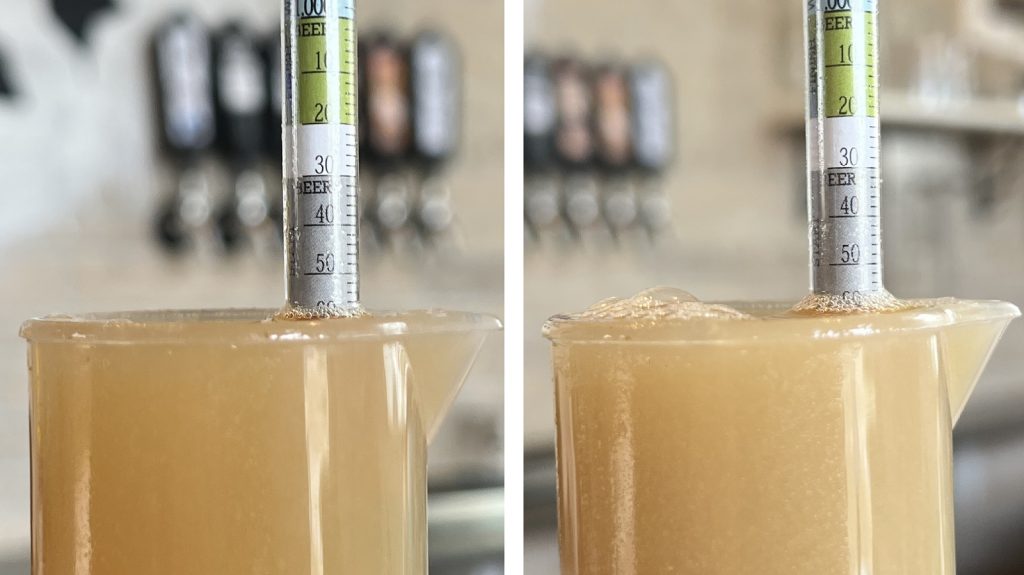
The fermenters were connected to my glycol unit and left to finish chilling to my desired fermentation temperature of 66°F/19°C, at which point I pitched a single pouch of Omega Yeast OYL-402 Cosmic Punch into each batch. After 3 days of fermentation, I added the first dry hop charge, then waited another 3 days before adding the final dose of dry hops. I left the beers alone for 3 more days before taking hydrometer measurements confirming they reached the same 1.012 FG. At this point, I cold crashed the beers for 2 days before pressure-transferring them to CO2 purged kegs. The filled kegs were placed in my cold box and burst carbonated overnight before I reduced the gas to serving pressure. After a week of conditioning, they were carbonated and ready for evaluation.
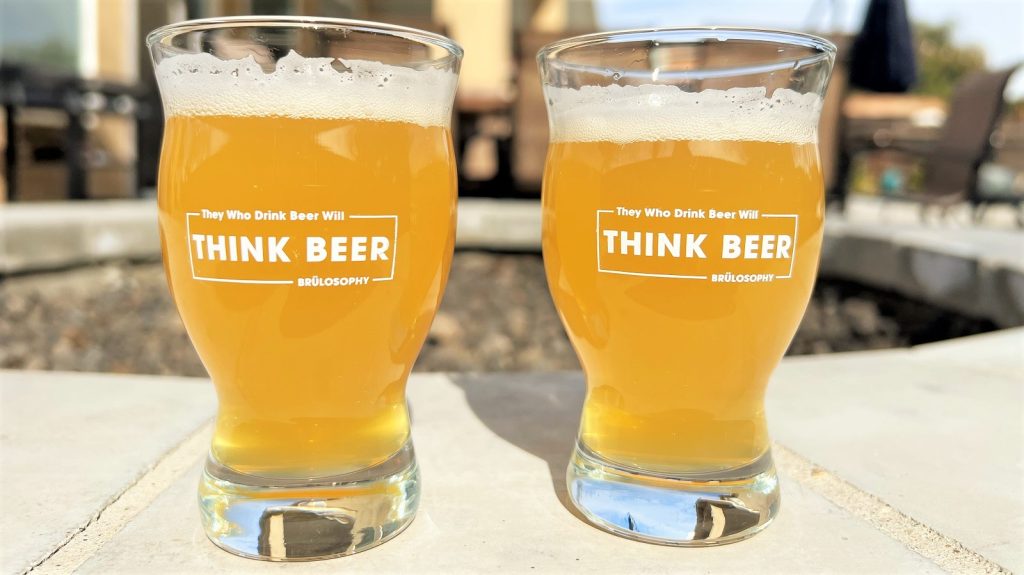
| RESULTS |
A total of 21 people of varying levels of experience participated in this xBmt. Each participant was served 1 sample of the beer made with Phantasm and 2 samples of the beer made without Phantasm in different colored opaque cups then asked to identify the unique sample. While 12 tasters (p<0.05) would have had to accurately identify the unique sample in order to reach statistical significance, just 7 did (p=0.58), indicating participants in this xBmt were unable to reliably distinguish a Hazy IPA made with Phantasm from one made without it when both were fermented with thiolized yeast.
My Impressions: Out of the 5 semi-blind triangle tests I attempted, I correctly identified the odd-beer-out 3 times, but I was admittedly guessing each time. Both beers tasted great! They were tropical and fruity, great examples of hazy IPAs, and they were basically identical to me.
| DISCUSSION |
The love of hops has expanded beyond small groups of craft beer nerds and brewers, likely due to the increased availability of varieties that impart pungent fruity notes as well as methods to keep bitterness levels in check. Constantly striving to produce beers with even more intense hop aroma, brewers have been experimenting with methods to free bound thiols, one of which involves adding a powder made from grape skins to the wort prior to fermentation. Curiously, tasters in this xBmt were unable to reliably distinguish a Hazy IPA made with Phantasm powder from one made without it when both were fermented with thiolized yeast.
When thinking about possible explanations for these results, only a couple things come to mind, the first being the most obvious, which is that Phantasm simply didn’t have the expected effect. While this aligns with some of the reports from other brewers who have tried this product, many swear it leads to more intense tropical fruit aroma, which made me wonder if perhaps something else may have been at play. Saaz hops are said to contain a relatively high concentration of bound thiols, and seeing as both beers were fermented with thiolized yeast, perhaps the Phantasm simply had minimal impact beyond what the hops contributed.
I personally love the direction the beer world is headed when it comes to IPA and get excited by any product that can help increase fruity hop pungency. While I have no reason to question the claims made by the manufacturer of Phantasm, as well as those who have reported success using it, I was admittedly surprised with how little impact it had on these xBmt beers. I will definitely continue to explore this unique new ingredient, though at this point, it’s not something I plan to integrate into my regular IPA brewing process.
If you have any thoughts about this xBmt, please do not hesitate to share in the comments section below!
Support Brülosophy In Style!
All designs are available in various colors and sizes on Amazon!
Follow Brülosophy on:
FACEBOOK | TWITTER | INSTAGRAM
If you enjoy this stuff and feel compelled to support Brulosophy.com, please check out the Support page for details on how you can very easily do so. Thanks!


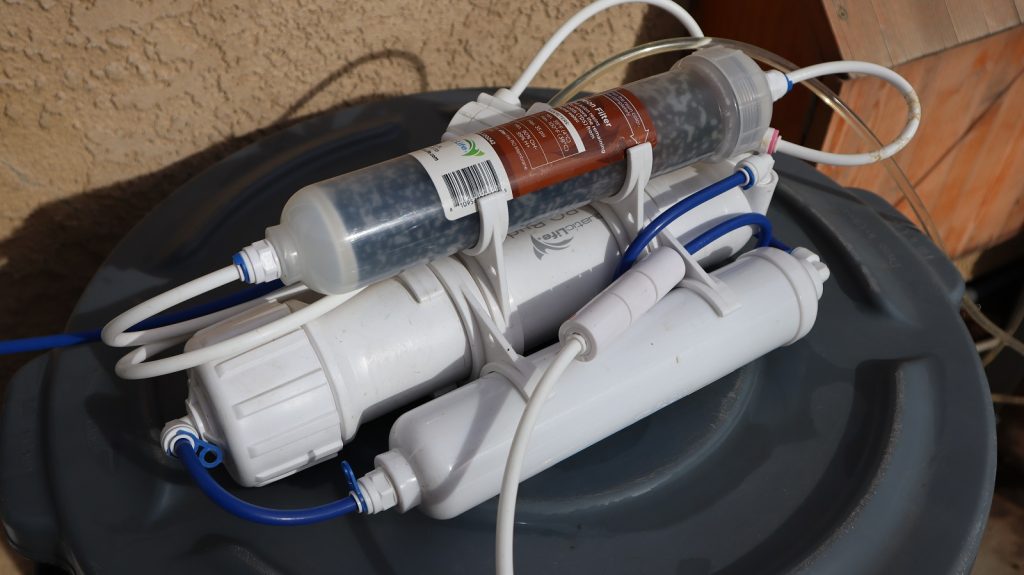
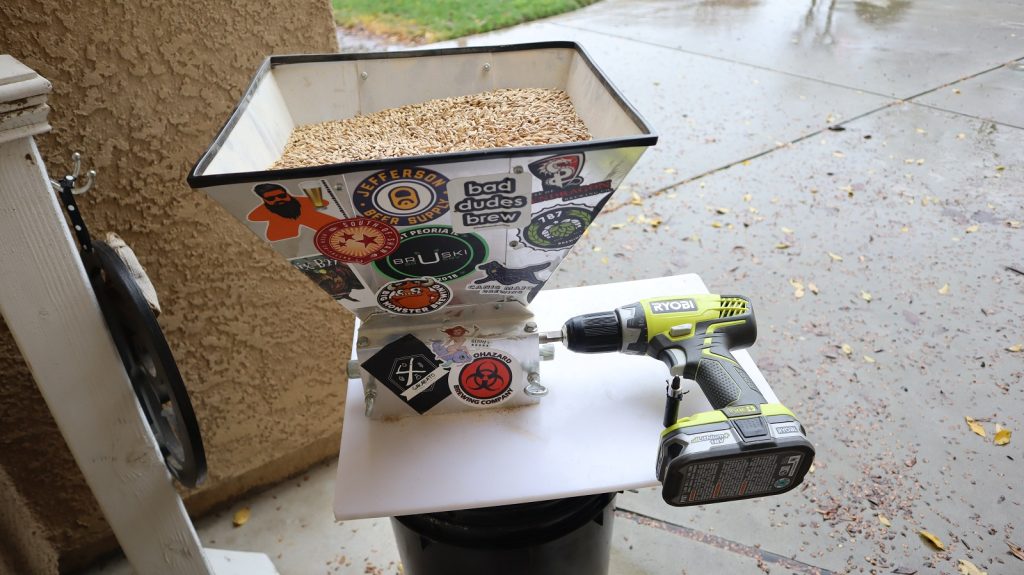
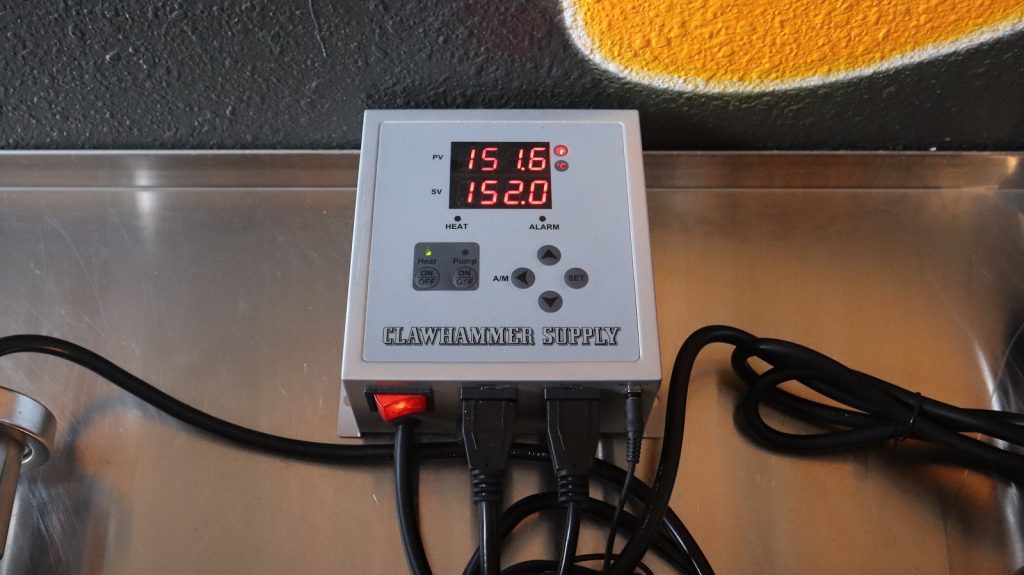
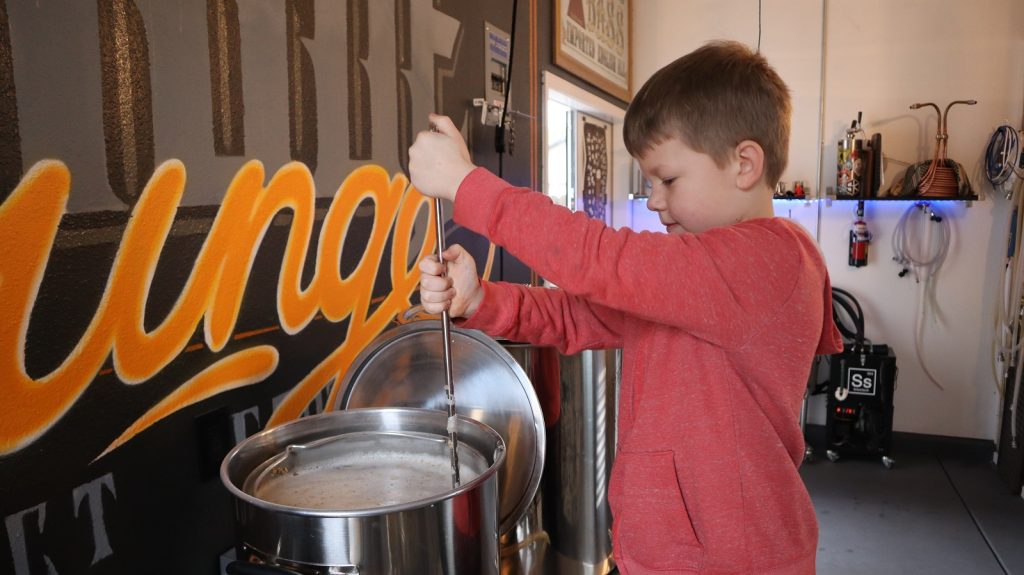
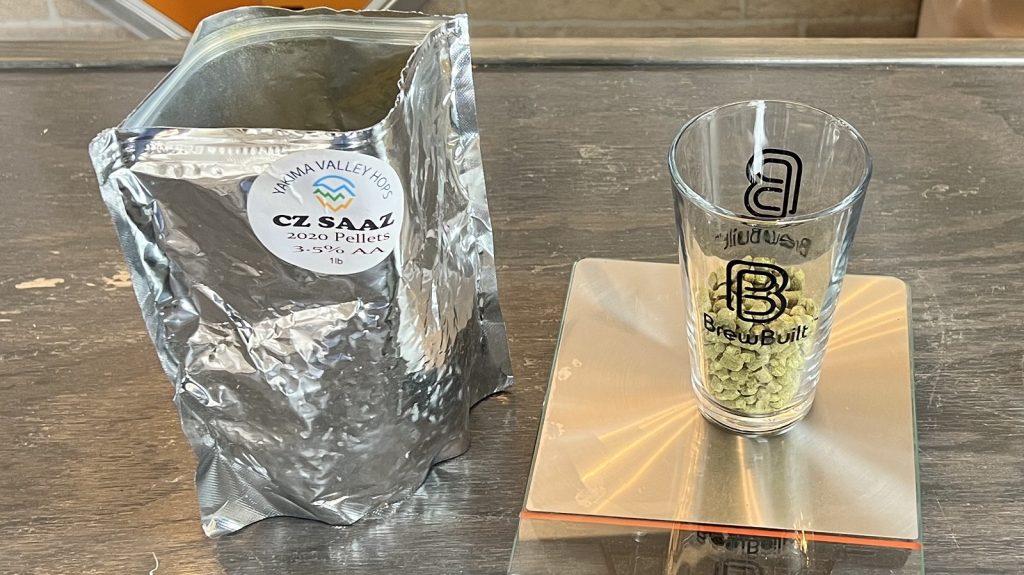
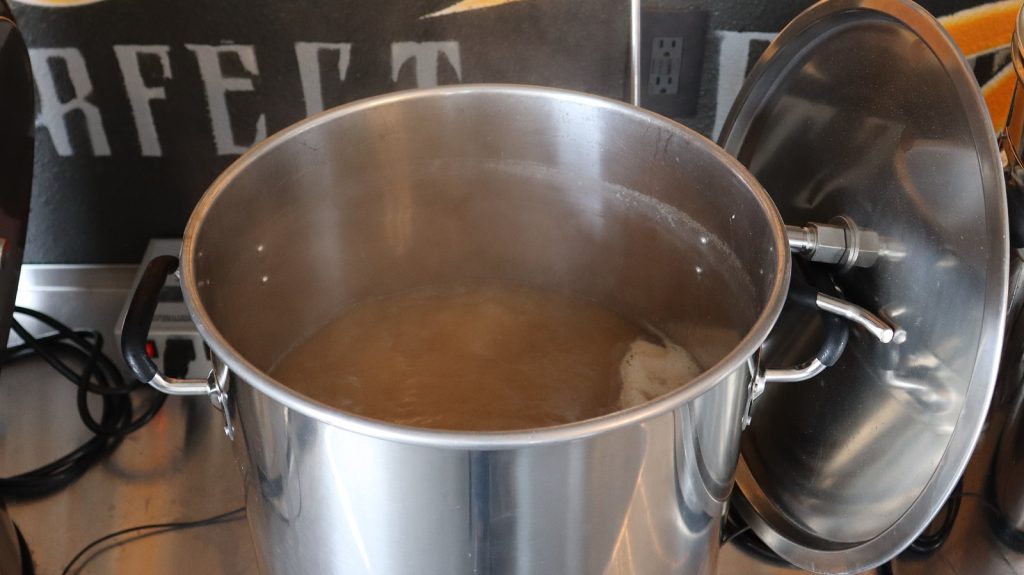

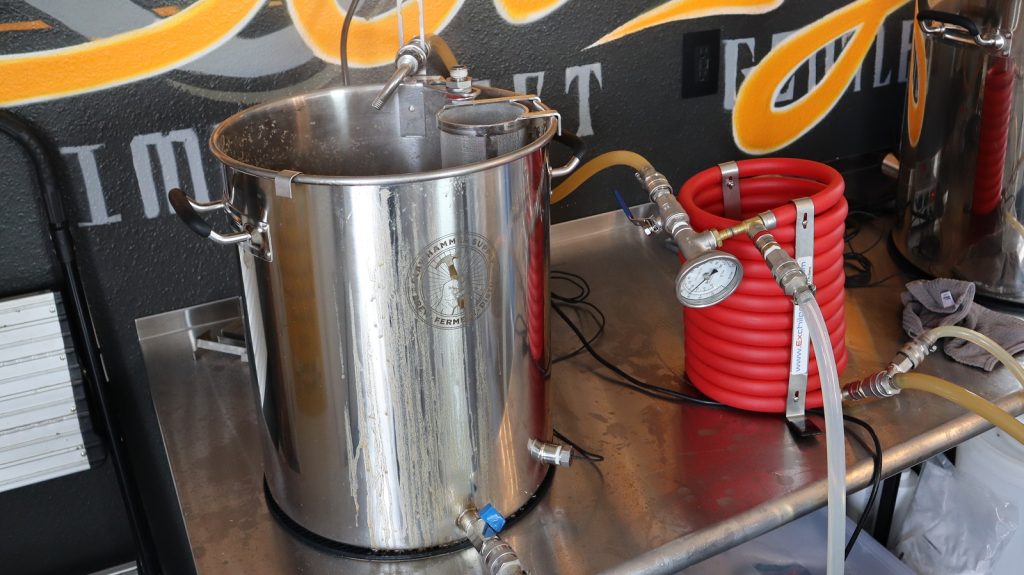











23 thoughts on “exBEERiment | Impact Phantasm Powder Has On A Hazy IPA”
“My Impressions” section hasn’t been filled.
Also it was my understanding that Saaz should be used as a mash hop in order to release the thiol precursors, while other hot and cold hop additions should rather use fruity hops to complement the thiols.
Saaz came through wonderfully on this one! I was pleased with the tropical notes that are in the final product.
Interesting, do you can make a fruity hazy IPA using only Saaz. I wonder if it would also work with a non-GMO thiolized yeast, like WLP077.
Missing info in the “My Impressions” section of the results.
We updated it. Good catch!
How many times did you identify the correct sample?
I got it right three out of five times, but was guessing.
We updated the article, but I got it correct three out of the five times.
Hmm.. I though Phantasm was supposed to be more expressive in the dry hop.
We’d looked at various times to add the Phantasm and landed on flameout for this test. I’ll surely try it in dry hop and even adding it earlier in the boil to see how it performs.
I’m curious as to how the beer tasted? In other words, what was your subjective opinion of its flavor? Was it good with saaz hops?
The beer is fantastic! Tons of tropical and melon notes. Once it warms up a little in the glass there are even some peachy notes that come through on the flavor.
You specify adding 3 oz of Phantasm to one batch, but the picture shows only 1/10th that amount on the scale. Could you clarify how much Phantasm you added? Thanks!
Good eye! We figured that out too and added the full 3oz. I just forgot to get a new picture. It was almost a full pint glass full!
Why didn’t you compare one batch with hops and the other batch with Phantasm but without hops (assuming only a bittering addition to compensate IBUs)?
That maybe could explain more realistically the role of Phantasm.
Interesting. I see your point, but we wanted everything to be equal in the two batches so we kept the dry hop. That being said, if would be interesting to see if that would cause a noticeable difference!
Interesting article.
Obviously no single brew will give comprehensive results, but this is a good starting point.
Good experiment. I am very skeptical of everything surrounding biotransformation and release of thiols and blah blah blah. I think expectation bias and its close cousin confirmation bias are informing brewers who swear it’s a real thing, at least on a practical level. It may be measurable in a lab setting, but it is very common for lab results to fail to translate to real-world results, in any discipline. I am sure the sellers of Phantasm will be happy to take your money though.
Totally agree with Freeheeler. Lots of buzz words getting thrown around that may be measurable in a lab, but people can’t taste a difference. I’ve been saying that regarding bio transformation for years. Add Phantasm to the list.
It may be just a case of not enough Phantasm powder to make a noticeable impact. Maybe more Phantasm powder is needed.
This mirrors my results in my most recent IPA using Phantasm and Helio Gazer. I even used a much reduced hopping rate and minimal dry hops. My suspicion is that in a heavily hopped IPA that the hop aroma just overpowers the thiols.
I will say that the unhopped DME-only starter had a very noticible papaya/guava tropical fruit aroma. Maybe these aromas are simply too nuanced or delicate to stand above hop aromas.
I have a Lunar Crush pils scheduled soon. It will be interesting to see how this turns out with a much lower late hopping rate.
Phantasm is a joke. Every beer that I’ve had with it just doesn’t deliver anything attractive.
I like Cosmic Punch a lot. However, I ferment at 70-73 (or so). I wonder about the result if you fermented a little warmer. Thanks for this experiment and all that you do for our sport/hobby/obsession.